1. The Accidental Invention That Saved Millions of Hearts
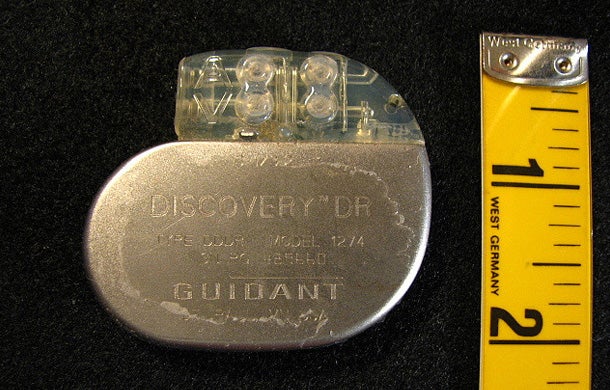
While researching hypothermia in the 1940s, Canadian electrical engineer John Hopps was trying to use radio waves to rewarm the body. But in the process, he made a stunning discovery: if the heart stopped due to extreme cold, it could be restarted with electrical pulses. That breakthrough led to the invention of the first external pacemaker in 1951—a device that could mimic the heart’s natural rhythm and bring it back to life. Hopps wasn’t trying to fix hearts, but he changed cardiology forever.
2. The Accidental Discovery of Penicillin
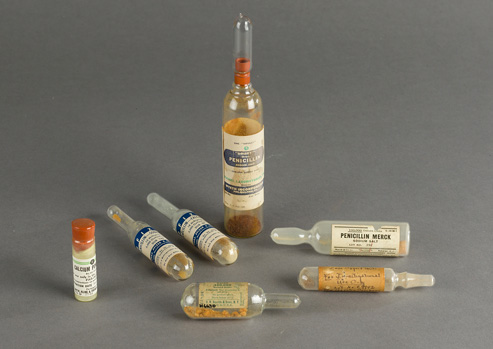
In 1928, microbiologist Alexander Fleming returned from vacation to find that one of his petri dishes had been uncovered carelessly. Where most would have seen lab contamination, he saw something strange: the mold that had crept in, Penicillium notatum, was killing the surrounding bacteria. That forgotten dish sparked the discovery of penicillin, the first proper antibiotic to transform modern medicine and save hundreds of millions of lives. What began as a simple accident became one of the most significant breakthroughs in history, wiping out infections that once guaranteed death and changing how we treat disease forever.
But Fleming’s discovery nearly faded into obscurity. It took over a decade, a world war, and the industrial ingenuity of Oxford researchers Howard Florey and Ernst Chain to turn that mold into a miracle drug. By World War II, penicillin was being mass-produced, credited with saving wounded soldiers and civilians alike. Today, it’s considered one of the most important medical discoveries of all time, and it happened because someone didn’t clean up after themselves. National Institutes of Health
3. A Volcano Eruption in 1815 Made It Snow in Summer

In April 1815, Mount Tambora erupted with a force unlike anything humans had recorded. Located on the island of Sumbawa in Indonesia, the blast hurled over 36 cubic miles of ash and debris into the sky, enough to bury all of Manhattan under a mile-thick layer of volcanic rock. The explosion was so intense it registered as a seven on the Volcanic Explosivity Index, the highest possible rating. Temperatures around the world plummeted as the thick veil of ash cloaked the atmosphere, blocking sunlight and throwing Earth’s climate into temporary disarray. What followed was not just one of the deadliest eruptions in history but a complete disruption of global weather patterns.
The year 1816 became known as “The Year Without a Summer,” when snow fell in June across the northeastern U.S., lakes froze in Pennsylvania in July, and frosts destroyed crops as far south as Virginia. Europe, reeling from the Napoleonic Wars, descended into widespread famine and panic. Horses died, forcing people to invent crude velocipedes, early bicycles, to get around, while starvation sparked riots across France, Switzerland, and the UK. Meanwhile, a 19-year-old Mary Shelley, trapped in a cold villa on Lake Geneva, began writing Frankenstein. Mount Tambora’s eruption did more than alter landscapes. It triggered a climate event so severe that it transformed global agriculture, invention, migration and even literature. Smithsonian Magazine
4. The Microwave Was Invented by a Melted Candy Bar
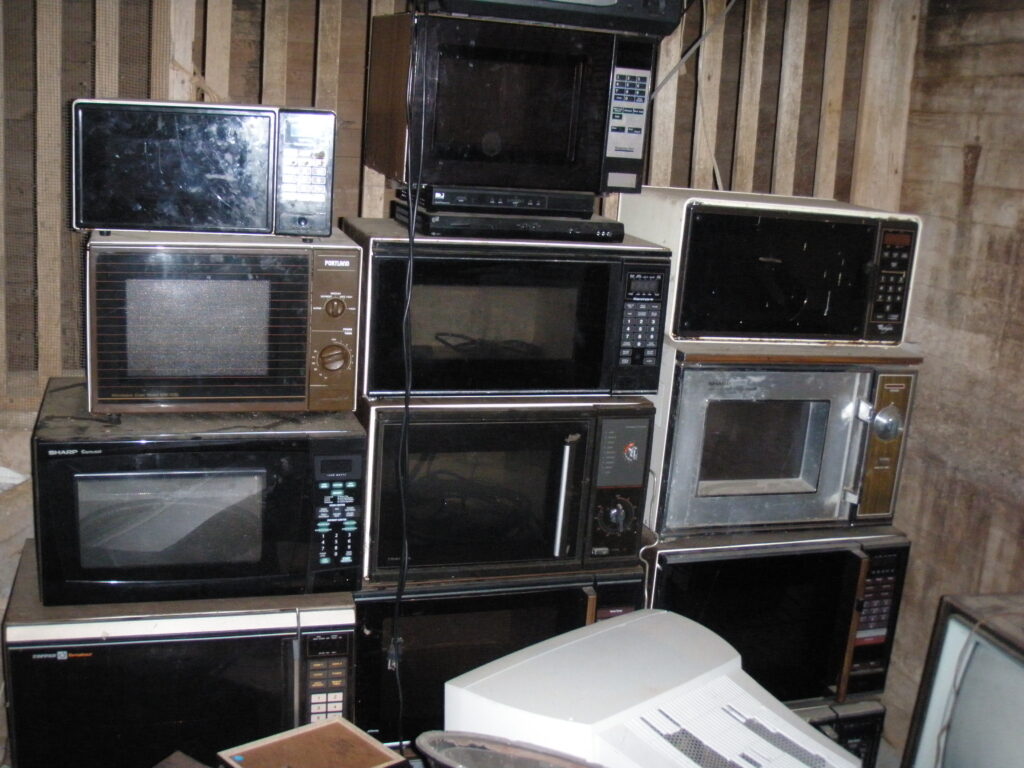
In 1945, engineer Percy Spencer was testing a military-grade magnetron, the vacuum tube that powers radar, when he noticed something strange. A chocolate bar in his pocket had melted. Curious, he aimed the magnetron at a bag of popcorn, which promptly began to pop. The accidental experiment led him to invent the first microwave oven, initially called the “Radarange.” It wasn’t exactly kitchen-friendly at over 5 feet tall and weighing 750 pounds. But the idea had been born: cooking with electromagnetic radiation, not heat. Spencer never set out to change how people ate; he just noticed the chocolate.
Microwaves work by agitating water molecules inside food, creating heat from the inside out. While early models were too expensive for the average household, prices dropped in the 1970s, and by the mid-1980s, more than 25% of American homes had one. Today, the microwave is used by over 90% of U.S. households and has shaped everything from TV dinners to college dorm life. The popcorn button, the reheated coffee, and the mug cake at midnight started because a man walked too close to a radar tube with a candy bar in his shirt. National Museum of American History
5. The Toy Slinky Was Born From a Shipyard Mishap
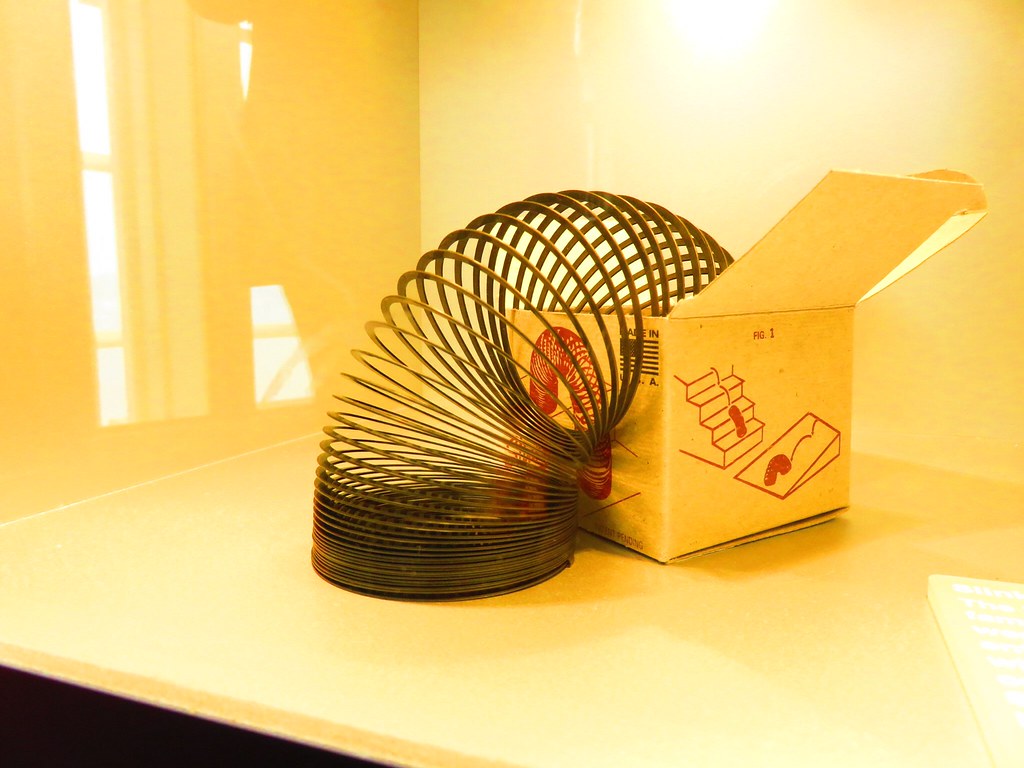
In 1943, naval engineer Richard James was working on a tension spring to stabilize sensitive instruments aboard warships. While tinkering at his desk, he accidentally knocked one of the springs off the shelf and watched it walk itself down instead of crashing to the ground. It moved with an oddly graceful motion, coiling and recoiling as it descended. James saw potential not in engineering, but in entertainment. He took the idea home, and with his wife Betty’s help, he refined the design and named it the Slinky. Within two years, the toy debuted at Gimbels department store in Philadelphia, and 400 units sold out in just 90 minutes.
The Slinky became an American icon, made initially from 80 feet of steel wire. Its deceptively simple design has been used in physics classes, space shuttles (as zero-gravity tools), and even therapy sessions for children with sensory issues. More than 300 million units have been sold worldwide. It’s one of the few toys inducted into the National Toy Hall of Fame that started as an industrial accident. What began as a wartime technical experiment became one of the most enduring toys of the 20th century, proof that sometimes, genius does fall off a shelf. The Strong National Museum of Play
6. The Great Molasses Flood Drowned a Boston Neighborhood
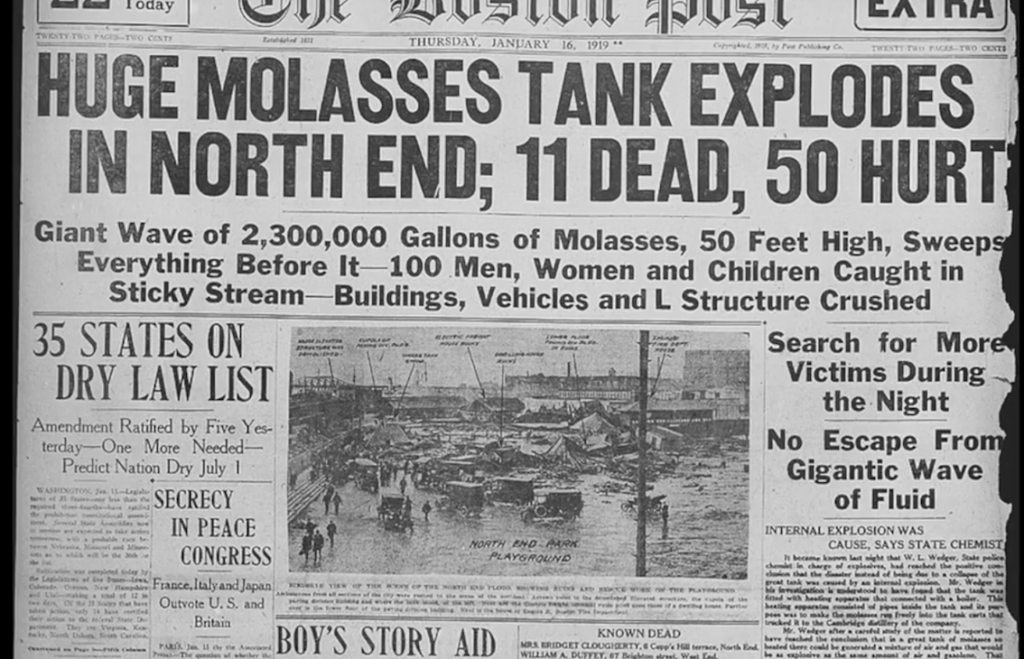
On January 15, 1919, a massive storage tank holding over 2.3 million gallons of molasses burst in Boston’s North End. The 50-foot-tall iron container exploded without warning, unleashing a wave of syrup that reached up to 25 feet high and moved at 35 miles per hour. The flood flattened buildings, snapped girders, and tossed freight cars like toys. Horses and people were swallowed whole. Twenty-one people died, over 150 were injured, and it took weeks to clear the sticky mess. Residents said the neighborhood smelled like molasses every summer for decades afterward.
Though it sounds like a tragic punchline, the incident was a perfect storm of corporate negligence, warm temperatures, and poor maintenance. The tank had reportedly leaked so often that locals collected molasses in buckets. After the disaster, lawsuits revealed that the company, United States Industrial Alcohol, had rushed construction and ignored warnings. The catastrophe led to stricter building codes and corporate accountability standards nationwide. It’s now studied in engineering and ethics classes as one of the deadliest industrial accidents in U.S. history. Boston.com
7. A Wrong Turn Sparked World War I
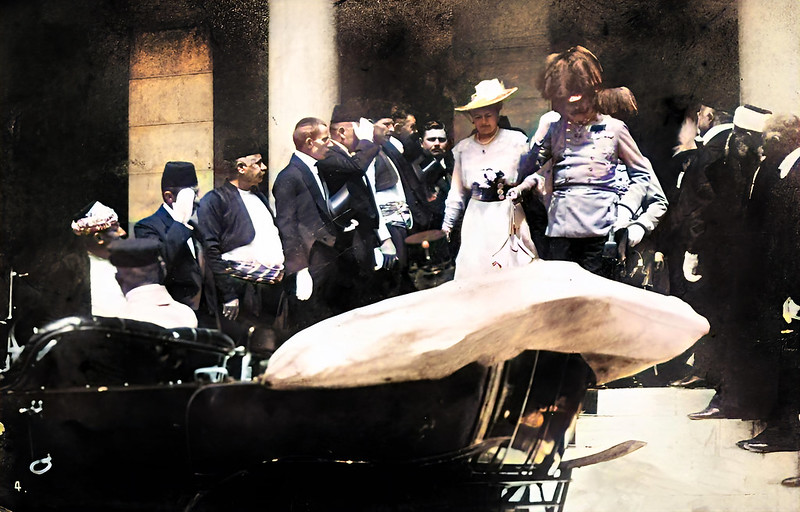
On June 28, 1914, Archduke Franz Ferdinand of Austria-Hungary was visiting Sarajevo when his motorcade made a fatal mistake. After surviving an earlier assassination attempt that morning, the archduke decided to visit the hospital where his injured men were being treated. But his driver took a wrong turn onto a side street, directly past Gavrilo Princip, an original would-be assassin standing outside a sandwich shop. Princip, surprised but ready, stepped forward and fired two shots, killing the archduke and his wife. That single wrong turn unleashed a cascade of war declarations that would soon engulf the globe.
The assassination led Austria-Hungary to declare war on Serbia, prompting a chain reaction among allied nations that escalated into World War I. More than 20 million people would die in the conflict, and the Treaty of Versailles that followed laid the groundwork for World War II. One mistaken turn, one trigger pulled at the wrong moment, and the entire course of the 20th century was rewritten. History often hinges on strategy and power, but in this case, it also hinged on a confused driver and a hungry assassin. History Channel
8. A Sticky Mistake Led to the Invention of Post-it Notes
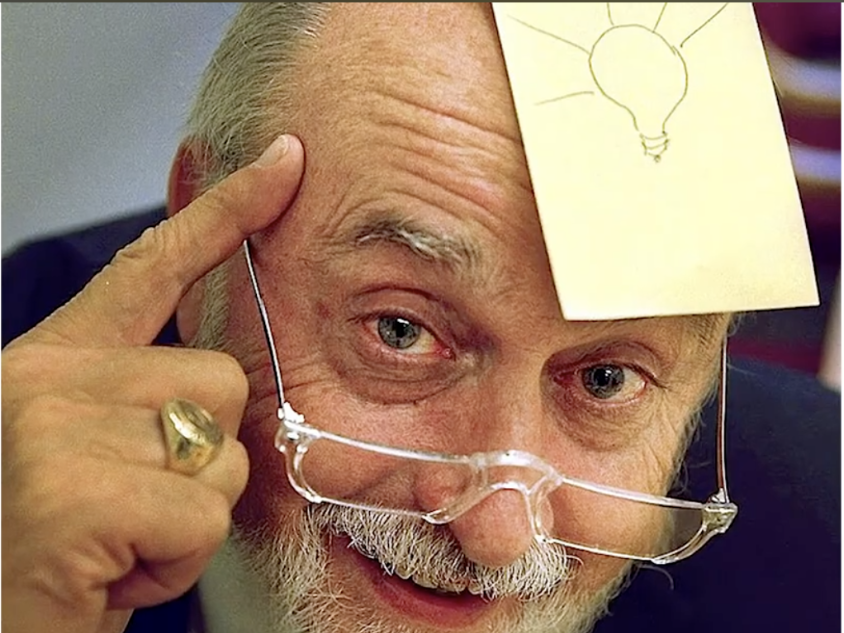
In 1968, scientist Spencer Silver at 3M was trying to develop a super-strong adhesive. Instead, he accidentally created one of the weakest glues the company had ever seen. It stuck lightly to surfaces but peeled off without leaving residue. It was too weak for industrial use but oddly persistent. The idea sat idle until 1974, when colleague Art Fry had a frustrating problem: the paper bookmarks he used in his church hymnal kept falling out. Remembering Silver’s “failed” glue, Fry applied it to paper scraps and created the prototype for what would become the Post-it Note.
The now-ubiquitous sticky note was launched in 1980 and quickly became a workplace staple, changing how people brainstorm, organize, and communicate. More than 50 billion Post-it Notes are sold annually across over 100 countries. Originally born from a chemical flop, it’s now considered one of the most successful office innovations ever. A failed formula, a choir book, and a dash of persistence turned one man’s mistake into an icon of everyday creativity. 3M Official History
9. A Space Shuttle O-Ring Failure Shocked the Nation
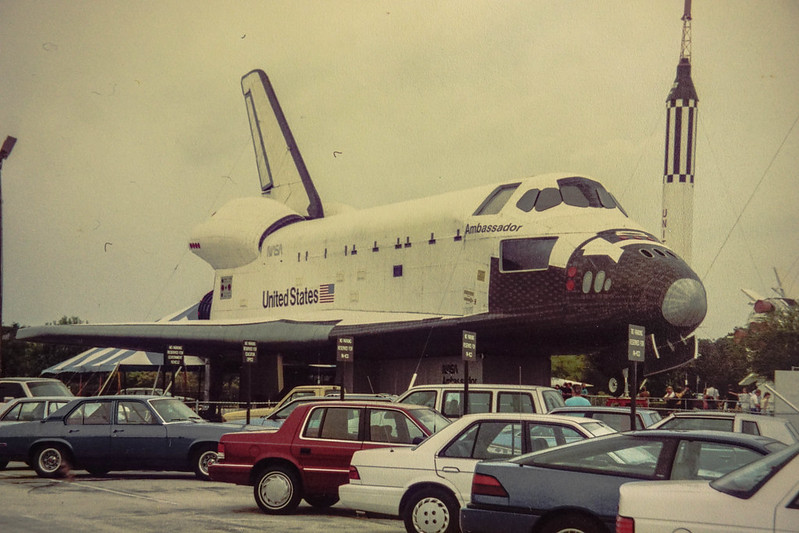
On January 28, 1986, millions of Americans watched live as the Space Shuttle Challenger broke apart just 73 seconds after liftoff. The explosion killed all seven crew members, including Christa McAuliffe, a schoolteacher who was to be the first civilian in space. The disaster was caused by a small rubber O-ring in the right solid rocket booster that failed in freezing weather, allowing hot gas to escape and trigger a catastrophic chain reaction. Engineers had warned of the risk the night before, but NASA executives proceeded with the launch under immense schedule pressure.
The tragedy grounded the shuttle program for nearly three years, leading to sweeping changes in NASA’s safety protocols. The Rogers Commission, which investigated the disaster, revealed technical failure and a flawed decision-making culture prioritizing deadlines over safety. The Challenger explosion became a defining moment in American space history, a stark reminder that even small, overlooked parts can bring down giant systems when warnings go unheeded. NASA History Division
10. A Spilled Chemical Created the First Synthetic Dye
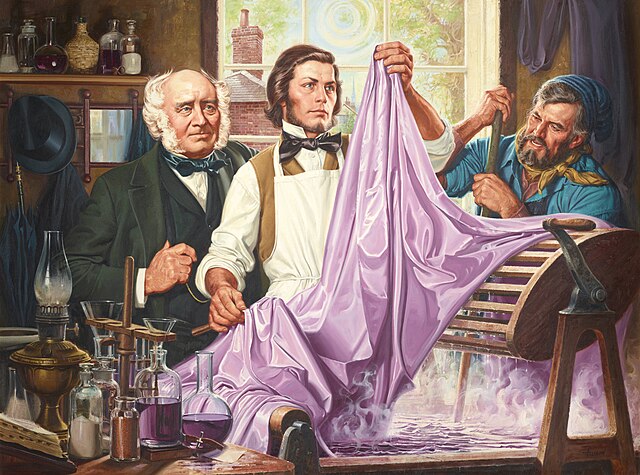
In 1856, 18-year-old chemistry student William Perkin was trying to synthesize quinine, the only treatment for malaria at the time. While experimenting in his makeshift lab at home, he accidentally created a thick, dark sludge that stained everything it touched a vivid purple. Instead of discarding it, Perkin realized the mixture dyed silk beautifully and permanently. He had stumbled upon mauveine, the world’s first synthetic dye, and launched the modern chemical industry with it. At 18, he dropped out of school, patented his invention, and opened a dye factory in London.
Before Perkins’ discovery, purple dye came from crushing thousands of sea snails and was so expensive that it was reserved for royalty. His cheap, vibrant alternative revolutionized fashion and industry, making color widely accessible for the first time. It also marked the birth of industrial organic chemistry, eventually leading to breakthroughs in everything from medicine to photography. Mauve became a Victorian-era sensation, sparking what historians call “mauve mania.” One botched experiment not only changed science, it changed what the world wore. Royal Society of Chemistry
11. A Misread Label Led to the X-Ray
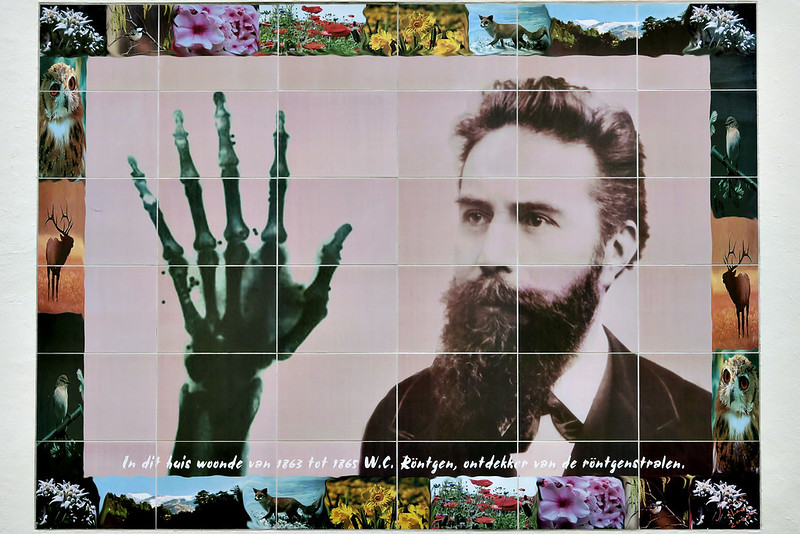
In 1895, German physicist Wilhelm Röntgen was experimenting with cathode ray tubes when he noticed a strange glow on a nearby fluorescent screen, even though the tube was shielded. Curious, he placed various objects between the tube and the screen and was shocked to find that he could see through them. When he held up his hand, he saw the shadow of his bones. Röntgen had accidentally discovered a previously unknown type of radiation, which he dubbed “X-rays” for their mysterious nature. Within weeks, he captured the world’s first X-ray image: his wife’s hand, wedding ring and all.
Unlike many scientific discoveries that take years to prove useful, X-rays were applied in medicine almost immediately. By 1896, they were being used to locate bullets and broken bones on battlefields. Röntgen won the first Nobel Prize in Physics, and the technology exploded globally. The accidental discovery revolutionized diagnostics, making the invisible visible and laying the groundwork for medical imaging, security screening, and more. What began as a flicker of light in a dark lab would literally change how we see the human body. Radiological Society of North America
12. A Broken Beaker Led to Safety Glass
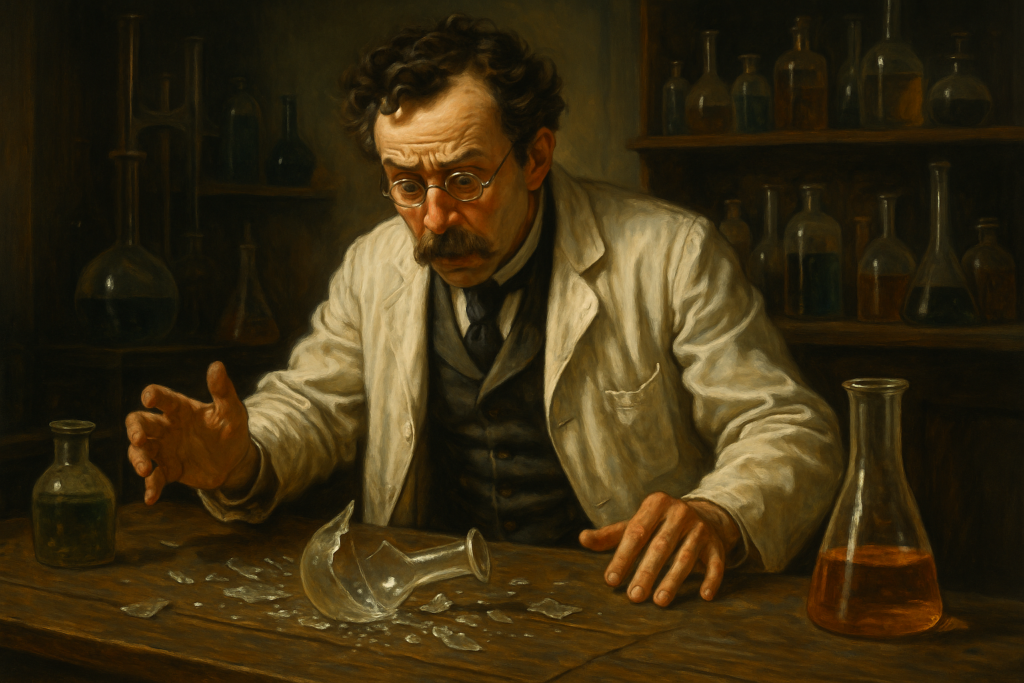
1903 French chemist Édouard Bénédictus accidentally dropped a glass flask in his lab. To his surprise, it shattered but didn’t break apart—the pieces held their shape. He discovered the flask had contained a plastic cellulose nitrate coating that had dried inside, creating a thin, invisible film. Intrigued, Bénédictus realized this accidental reinforcement could be used to develop shatter-resistant glass. Though it took years to refine, his discovery became the foundation for laminated safety glass, now found in everything from car windshields to skyscrapers.
The innovation proved critical in the growing automobile industry, where high-speed crashes made traditional glass a lethal hazard. By the 1920s, safety glass became standard in cars, dramatically reducing injuries from flying shards. It’s also used in riot-proof windows, hurricane-resistant buildings, and even astronaut helmets. What began as a spilled experiment in a Paris lab reshaped modern safety standards and turned a fragile material into a lifesaving staple. The Guardian
13. A Burnt Peanut Oil Batch Led to Superglue
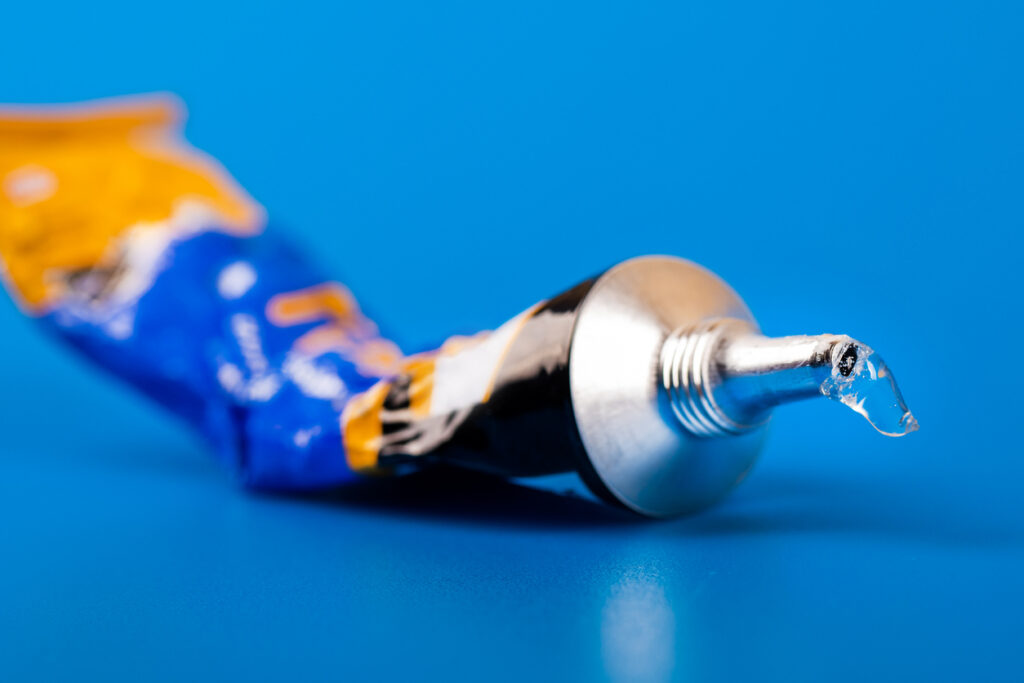
In 1942, a team of chemists at Eastman Kodak, led by Harry Coover, attempted to create a clear plastic for gun sights during World War II. Instead, they synthesized a cyanoacrylate compound, a sticky substance that bonded instantly to anything touched. It was considered too sticky to be useful and shelved at the time. Years later, in 1951, Coover revisited the compound while working on jet canopy materials and realized it could be repurposed as an industrial adhesive. Thus, Superglue was born, not as a war material, but as the accidental byproduct of a failed experiment.
Superglue went on to revolutionize everything from home repairs to battlefield medicine. During the Vietnam War, medics used it to seal wounds until proper care could be given temporarily. Its ability to form an almost instant bond with minimal material has since made it a staple in manufacturing, surgery, and everyday life. What started as a military misfire became one of the most versatile tools ever to come out of a lab. Smithsonian Institution
14. A Flopped Film Led to Bubble Wrap

In 1957, engineers Alfred Fielding and Marc Chavannes set out to invent a new type of textured wallpaper. Their idea? Seal two shower curtains together with air bubbles trapped in between. The decorative wallpaper idea flopped spectacularly. However, when they tried to market the material as greenhouse insulation and failed again, they finally landed on a third use: protective packaging. By 1960, they launched Sealed Air Corporation and began producing Bubble Wrap commercially. It was a last-ditch pivot that saved the project and revolutionized shipping.
Today, Bubble Wrap protects billions of packages annually and has become as culturally iconic as it is functional. It’s been used in space missions, medical devices, and even as a tool for sensory therapy. That came from a failed home décor idea that wouldn’t disappear. One of the world’s most satisfying inventions was never meant to be popped; it was meant to be hung on your wall. Smithsonian Magazine
Accidents are supposed to be meaningless: a dropped tool, a wrong turn, a misread formula. But history has never been that tidy. From volcanoes that rewrote the weather to broken beakers and half-finished glue, the world we live in today is shaped just as much by chaos as it is by intention. These 13 mishaps didn’t just leave a mark; they rewired medicine, war, science, and culture in ways no one could’ve predicted. It makes you wonder: how many world-changing moments are still hiding inside today’s mistakes?


